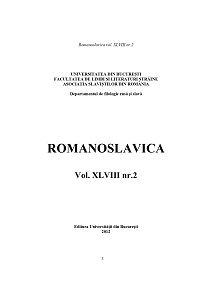Comicul gogolian între mascare şi demascare
The Gogolian comic between masking and unmasking
Author(s): Mihaela HerbilSubject(s): Short Story, Russian Literature, 19th Century, Theory of Literature, Stylistics, Sociology of Literature
Published by: Editura Universităţii din Bucureşti
Keywords: style; stylistics; aesthetics; linguistic stylistics; aesthetic stylistics; fantastical elements in short stories; comedy; humour; satire; literary genre; stylistic originality;
Summary/Abstract: Humor is equally important both for Gogol’s life and his literary creation. Nonetheless, the writer vehemently rejected that sort of humor which served only for fun and amusement. He wanted laughter to offer more than it usually did; he wanted it to unmask the general evil within society. Starting with Gogol, the role and mission of laughter would be assigned new meanings; they would serve the noble purpose of rendering dignity to man, by revealing his moral faults. Gogol was an expert in depicting man’s characteristic features, as well as in scrutinizing the inner universe of his heroes. His artistic vision was always directed towards what was actually hiding behind the comic layer. The result was that each of his stories, which abound in comic elements, is always hiding something else. The comic character is a type, while the object of the comedy resides in the presentation of characters, that is to say of general types. Humour and satire define the way in which characters are outlined; stylistically, the two elements emphasize narration, determining its specific tone and vividness of style.
Journal: Romanoslavica
- Issue Year: XLVIII/2012
- Issue No: 2
- Page Range: 115-122
- Page Count: 8
- Language: Romanian

